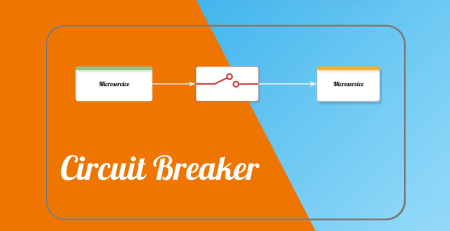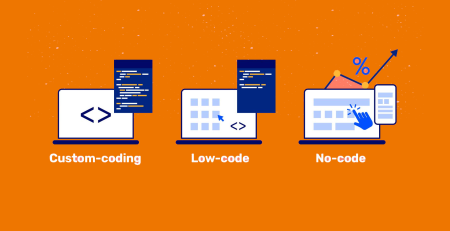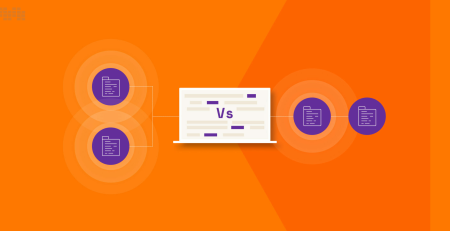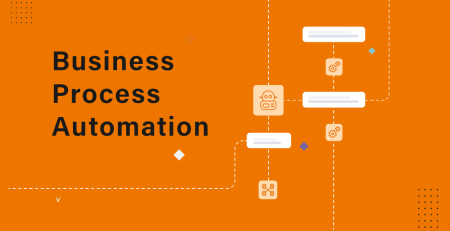Main Software Design Principles Every Developer Should Know
In the dynamic world of software development, mastering design principles is akin to laying a solid foundation for a building. Just as a sturdy foundation ensures stability and longevity, understanding and applying software design principles ensures your applications are scalable, maintainable, and adaptable. In this article, we’ll explore the essential software design principles that every developer should know.
Object-Oriented Programming (OOP) Principles
- Encapsulation: Protecting the Core: Encapsulation encapsulates data (attributes) and methods (functions) into a single unit, known as a class. This shields the internal workings of an object from external interference, promoting data integrity and security. Through well-defined interfaces, encapsulation hides complexity and offers controlled access to the object’s functionality.
- Abstraction: Focusing on the Essential: Abstraction focuses on the essential properties of an object while hiding irrelevant details. Abstract classes and interfaces provide a blueprint for creating objects, defining common attributes and methods that subclasses inherit. Abstraction simplifies problem-solving by allowing developers to work at higher levels of understanding.
- Inheritance: Building on the Past: Inheritance allows a class to inherit attributes and methods from another class. This promotes code reuse and hierarchical organization. Derived classes (subclasses) inherit properties of base classes (superclasses), enabling incremental development and specialization while maintaining a clear relationship.
- Polymorphism: Adapting to Change: Polymorphism allows objects of different classes to be treated as objects of a common superclass. This concept enables dynamic behavior based on the specific object’s type. Through interfaces, abstract classes, and method overriding, polymorphism enables the creation of flexible, adaptable code that responds to diverse scenarios.
Solid Design Principles
- Single Responsibility Principle (SRP): Breaking it Down: The SRP states that a class should have only one reason to change. In other words, it should have a single responsibility. By adhering to this principle, each class becomes focused on a specific task, making the codebase more modular and maintainable. A class with a single responsibility is easier to test, debug, and enhance.
- Open/Closed Principle (OCP): Embracing Change: The OCP suggests that software entities should be open for extension but closed for modification. This principle encourages developers to extend functionality by adding new code rather than changing existing code. This approach maintains the stability of existing components while allowing the system to evolve with new features.
- Liskov Substitution Principle (LSP): Ensuring Compatibility: The LSP emphasizes that objects of a derived class should be substitutable for objects of the base class without affecting the correctness of the program. Subclasses should maintain the behavior expected from the base class, ensuring a smooth transition between different implementations.
- Interface Segregation Principle (ISP): Tailoring Interfaces: The ISP advocates for small, specific interfaces instead of large, general-purpose ones. Clients should not be forced to depend on methods they don’t use. This principle leads to more cohesive and focused interfaces, making interactions between components cleaner and more efficient.
- Dependency Inversion Principle (DIP): Inverting Dependencies: The DIP suggests that high-level modules should not depend on low-level modules; both should depend on abstractions. This inversion of dependencies leads to looser coupling and allows for easier substitution of components, promoting flexibility and maintainability.
Don’t Repeat Yourself (DRY)
The DRY principle is a fundamental concept that urges developers to refrain from duplicating code or logic. In essence, if a piece of functionality or information exists in multiple places within your codebase, it’s a sign that you’re not adhering to DRY. Repetition increases the chances of errors, complicates maintenance, and makes it difficult to implement changes consistently across the application.
Benefits of Following the DRY Principle:
- Code Simplicity: Repeating the same code leads to bloated, convoluted codebases. Adhering to DRY results in cleaner, more concise code that is easier to read and understand.
- Maintenance Ease: When changes are needed, a DRY codebase requires updates in only one place. This drastically reduces the chances of errors and inconsistencies creeping in during maintenance.
- Bug Reduction: DRY helps in minimizing bugs caused by inconsistent changes across duplicated pieces of code. A single source of truth for each piece of logic reduces the scope of potential errors.
- Modularity: Following DRY naturally encourages modularity. Code is separated into reusable components, promoting better organization and facilitating code reuse.
- Efficiency: Less duplicated code means faster development. Developers spend less time writing and maintaining code, allowing them to focus on implementing new features.
- Scalability: As applications grow, DRY becomes increasingly crucial. Scaling a DRY codebase is simpler because changes can be made in a centralized manner.
Applying the DRY Principle:
- Extract Common Logic: Identify repeating patterns and logic in your codebase. Extract these into functions, methods, or modules that can be reused across different parts of the application.
- Use Abstractions: Leverage abstraction techniques to encapsulate common behaviors. Interfaces, base classes, and design patterns help in implementing DRY effectively.
- Database Schema and Queries: Apply DRY to your database schema and queries as well. Use migrations and ORM tools to manage schema changes consistently.
- Configuration: Keep configuration settings centralized, preventing the need to update them in multiple places.
- Refactor as Needed: Regularly review your codebase and refactor whenever you identify duplicated logic. The initial investment in refactoring pays off in the long run.
Keep it Simple, Stupid (KISS)
KISS is a principle that advocates for the simplest approach to solving a problem. It urges developers to avoid overengineering, unnecessary features, and intricate designs. In essence, KISS is a reminder that the simplest solution is often the most effective one.
Benefits of Following the KISS Principle:
- Clear Understanding: Simple solutions are easier to understand. Team members, including future developers, can grasp the purpose and functionality of the code more quickly.
- Reduced Errors: Complex solutions tend to have more hidden corners where errors can lurk. Simplicity reduces the surface area for bugs, making the code more reliable.
- Faster Development: Simple designs often lead to faster development cycles. Developers spend less time navigating complexities and more time delivering valuable features.
- Ease of Maintenance: As projects evolve, the simplicity of KISS translates to easier maintenance. Simple code is less likely to break during updates or modifications.
- Adaptability: Simple solutions are inherently more adaptable. Changes and enhancements can be made without navigating a labyrinth of intricate interactions.
- Lower Learning Curve: For team members joining the project, a simple codebase means a shorter learning curve. New developers can quickly become productive.
Applying the KISS Principle:
- Start Small: Begin with the smallest possible solution to address a problem. Avoid overengineering or adding features that are not essential.
- Avoid Overcomplication: Resist the urge to add bells and whistles that do not serve the core purpose of the application.
- Regular Refactoring: Continuously review and refactor your codebase. Look for opportunities to simplify complex parts.
- Clear Naming: Use descriptive and clear naming conventions for variables, functions, and classes. This aids in understanding the purpose of each component.
- Minimize Dependencies: Choose dependencies carefully and only include those that are necessary. Complex dependency chains can lead to issues down the line.
- Seek Feedback: Share your code with peers and seek feedback. If they find it hard to understand, it might be a sign that you need to simplify it.
YAGNI (You Aren’t Gonna Need It)
At its core, YAGNI is a reminder to focus on what is immediately needed rather than succumbing to the temptation of adding features that might be required in the future. It encourages developers to avoid preemptive coding and overcomplication.
Benefits of Following the YAGNI Principle:
- Simplicity: YAGNI promotes simplicity by discouraging the addition of unnecessary features or code. Simple solutions are easier to understand, maintain, and troubleshoot.
- Faster Development: By prioritizing only what is needed, developers can accelerate the development process. This allows for faster iterations and quicker delivery of value.
- Reduced Complexity: Unnecessary features or functionality can introduce complexity and confusion. YAGNI helps in keeping the codebase cleaner and more comprehensible.
- Focused Design: Developers can concentrate on building what is essential, leading to a more focused and effective design.
- Easier Maintenance: Codebases without superfluous components are easier to maintain over time. Developers spend less effort dealing with unused or obsolete code.
- Adaptability: YAGNI leaves room for adaptability. As requirements evolve, developers can respond more effectively because they haven’t invested in features that may never be used.
Applying the YAGNI Principle:
- Prioritize Requirements: Focus on the immediate requirements of the project. Avoid implementing features or functionality that isn’t explicitly needed at the moment.
- Avoid Overengineering: Steer clear of overengineering solutions that tackle problems that haven’t arisen yet. Instead, solve problems as they emerge.
- Refactor with Purpose: Regularly review the codebase and refactor as needed. Remove unused or unnecessary components that don’t align with current requirements.
- Minimalist Mindset: Adopt a minimalist mindset when designing solutions. Strive to achieve the desired outcome with the least amount of code.
- Collaborative Communication: Maintain open communication with stakeholders. This ensures that development efforts are aligned with immediate needs and goals.
Law of Demeter (LoD) or Principle of Least Knowledge
The Law of Demeter (LoD) asserts that a module or object should only communicate with its immediate neighbors, rather than delving deep into the internal details of other objects. In simpler terms, it encourages a “don’t talk to strangers” approach, limiting dependencies and ensuring that components are less tightly coupled.
Benefits of Following the Law of Demeter:
- Reduced Coupling: By adhering to LoD, components become less dependent on the internal structure of other components. This leads to lower coupling, making it easier to modify and replace individual parts of the system.
- Enhanced Maintainability: LoD promotes modular and loosely coupled code, which in turn simplifies maintenance. Changes to one module are less likely to affect unrelated parts of the application.
- Code Isolation: Components that adhere to LoD are isolated from the complexities of other components. This isolation leads to cleaner code that is easier to understand and test.
- Improved Flexibility: LoD encourages components to rely on abstractions rather than concrete implementations. This enables easier substitution of components, making the system more flexible.
- Easier Collaboration: Teams can work more effectively on independent components without affecting the entire system. This promotes parallel development and collaboration.
Applying the Law of Demeter:
- Limit Direct Dependencies: A class should not expose its internal components directly. Instead, provide access through methods that encapsulate the interactions.
- Use Interfaces: Implement interfaces to define clear contracts between components. This prevents classes from having deep knowledge of each other’s internal details.
- Avoid Chain Calls: Avoid long chains of method calls that traverse multiple objects. Instead, limit interactions to a single step or method call.
- Encapsulate Behavior: Encapsulate behavior within classes so that other components interact with them using well-defined methods.
- Use Dependency Injection: Implement Dependency Injection to provide components with the dependencies they need, rather than allowing them to create their own dependencies.
Composition Over Inheritance
Composition Over Inheritance suggests that, instead of relying heavily on class inheritance to build complex systems, developers should prefer building classes by composing them from simpler components. This approach promotes code reuse, modularity, and flexibility.
Benefits of Composition Over Inheritance:
- Code Reusability: Composition allows you to reuse components in different contexts, leading to more modular and reusable code.
- Flexibility: Composition makes it easier to modify and extend functionality without altering the existing class hierarchy. This leads to more adaptable systems.
- Modularity: Composed classes can be developed and tested independently, promoting modularity and easier maintenance.
- Reduced Coupling: Composition reduces the tight coupling often associated with inheritance hierarchies. This enhances separation of concerns and reduces the risk of unintended side effects.
- Avoiding Fragile Base Class Problem: Composition mitigates the problem of introducing unintended changes to base classes, which can affect derived classes.
Applying Composition Over Inheritance:
- Identify Components: Identify reusable components that can be composed to create more complex classes.
- Use Interfaces and Abstractions: Use interfaces or abstract classes to define contracts that components must adhere to. This enables you to swap components without affecting the client code.
- Dependency Injection: Use dependency injection to inject components into classes that need them. This promotes loose coupling and facilitates testing.
- Favor Has-A Relationship: Think in terms of “Has-A” relationships rather than “Is-A” relationships. Encapsulate functionality through composition rather than inheritance.
- Delegate Responsibility: Delegate functionality to the composed components. This helps to create classes that focus on specific tasks.
- Avoid Deep Nesting: Avoid deep nesting of composed components. Strive for a balanced and well-structured composition.
The principle of Least Astonishment
The Principle of Least Astonishment revolves around the idea that software should behave in ways that users or developers naturally expect. It aims to minimize confusion, errors, and unexpected behavior by aligning software behavior with users’ mental models.
Benefits of Following the Principle of Least Astonishment:
- Enhanced User Experience: For end-users, applications that adhere to POLA lead to a more intuitive and satisfying experience, reducing the learning curve.
- Developer Usability: For developers, well-designed APIs and frameworks that follow POLA lead to faster development cycles and fewer bugs.
- Reduced Errors: By designing interfaces that behave as expected, you minimize the chances of users making mistakes due to misunderstandings.
- Consistency: POLA encourages consistent behavior across different parts of the software, leading to a more cohesive and unified user experience.
- Decreased Support Costs: Software that aligns with user expectations reduces the need for extensive documentation and support, saving time and resources.
Applying the Principle of Least Astonishment:
- Follow Conventions: Adhere to established conventions and patterns that users or developers are already familiar with.
- Prioritize Clarity: Make sure that labels, instructions, and error messages are clear and easy to understand.
- Avoid Ambiguity: Interfaces and interactions should not be ambiguous. Actions should lead to expected outcomes.
- Consistent Terminology: Use consistent and meaningful terminology throughout the application or codebase.
- User-Centered Design: Involve users in the design process to gather feedback and insights that align with their expectations.
- Testing and Feedback: Regularly test your software with real users or developers to identify areas where astonishment might occur.
- Solicit Feedback: Actively seek and listen to feedback from users and developers to identify areas of astonishment and improvement.













Leave a Reply